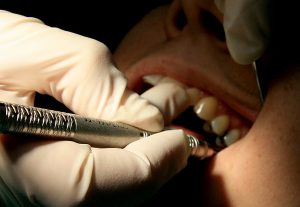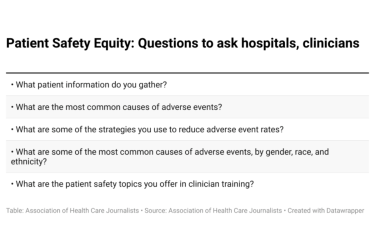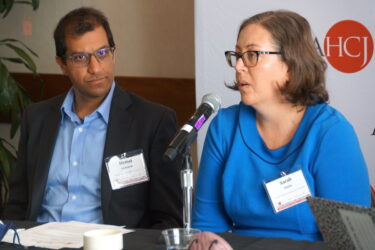
A new initiative launched by grassroots and tribal organizations aims to accelerate efforts to bring dental therapists to millions of Americans in communities where oral health services are scarce.
The National Partnership for Dental Therapy seeks to build visibility and support for midlevel dental workers, according to its organizers.
“Everyone, including the most vulnerable in our country and those in hard-to-reach areas, should have the opportunity to get basic oral health care,” said Tera Bianchi, program director with the nonprofit Community Catalyst, which is co-sponsoring the partnership together with the National Indian Health Board (NIHB).
NIHB Chief Executive Officer Stacy A. Bohlen said that the workers would help address deep needs.
“Half of all American Indians and Alaska Natives live in dental shortage areas where they can go months and sometimes years without needed treatment. Dental therapists can prevent this from happening,” Bohlen said in an announcement. Nearly 58 million Americans live in more than 5,800 federally designated dental health professional shortage areas, according to an analysis of federal data by the Henry J. Kaiser Family Foundation
Dental therapists, who are often compared to nurse practitioners or physician assistants, receive technical training in a range of routine preventive and restorative procedures. They serve as members of dentist-headed teams and are currently are working in tribal areas in Alaska, Washington and Oregon. Idaho recently has passed legislation to allow dental therapists to practice in tribal communities. Minnesota, Vermont, Maine, Arizona and Michigan – and most recently New Mexico – have passed laws allowing the model and other states are considering dental therapist legislation.
The National Partnership for Dental Therapy website features findings from an interdisciplinary panel of experts supported by the Pew Charitable Trusts and Community Catalyst and a model practice act designed to serve as a guide for states and tribal communities considering legislation.
Last year, the W.K. Kellogg Foundation launched an online resource library aimed at educating the public about dental therapists.
In 2015, the Commission on Dental Education (CODA) announced the establishment of national accreditation standards for dental therapist training programs.
For decades, countries around the world have used the mid-level provider model to expand cost-effective access to basic dental services.
The first dental therapists to provide services in Alaska’s tribal communities 15 years ago had to overcome legal challenges from national and state dental organizations to pursue their work. The practice model been strongly opposed by leading U.S. dental groups, including the American Dental Association, which contend that only dentists are qualified to perform irreversible procedures such as drilling and extracting teeth.
In spite of opposition, efforts to expand the model have continued around the country.
In February, New Mexico’s House Health and Human Services Committee voted to advance dental therapy legislation there and the measure was signed by the governor on March 28.
“House Bill 308, sponsored by Rep. Doreen Gallegos (D) and Rep. Gail Armstrong (R), passed the committee by a margin of 8 to 0,” Pamela L. Bonner reported for the Ruidoso News.
“Nearly 900,000 in New Mexican live in areas without enough dentists, with the burden falling heavily on rural, tribal, and low-income communities,” Bonner wrote, citing the New Mexico Dental Therapist Coalition as the source of the data.
Our AHCJ tip sheet on covering the dental therapist movement has been updated. Check it out!
Editor’s note: This blog post has been updated on May 2, 2019, to reflect recent legislation.








